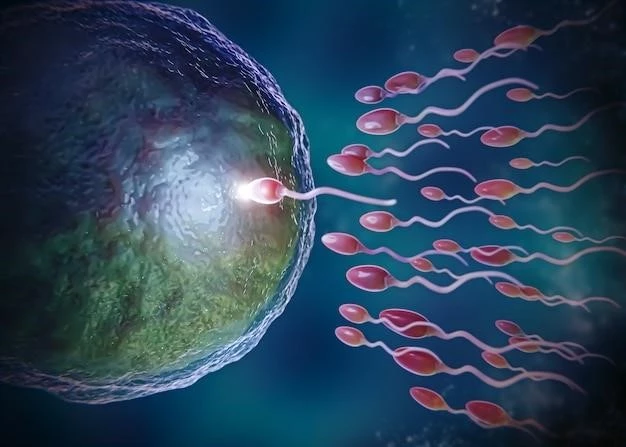Introduction
Microcephaly with chorioretinopathy‚ autosomal dominant form‚ is a rare genetic disorder characterized by small head size and eye abnormalities.
Overview of Microcephaly with Chorioretinopathy‚ Autosomal Dominant Form
The condition involves severe microcephaly‚ global developmental delay‚ dysmorphic features‚ and ocular anomalies such as chorioretinopathy. Genetic factors play a crucial role‚ with autosomal dominant inheritance seen in affected families. Recent advances include investigational new drug applications and the identification of causative genes.
Genetic Basis
The genetic basis of Microcephaly with Chorioretinopathy‚ Autosomal Dominant Form involves inheritance of specific autosomal dominant genes.
Autosomal Dominant Inheritance
Autosomal dominant inheritance plays a significant role in the transmission of Microcephaly with Chorioretinopathy‚ where a mutated allele from one parent leads to the development of the disorder. Understanding this mode of inheritance is crucial in diagnosing and managing the condition effectively.
Genetic Syndromes Associated with Microcephaly
Various genetic syndromes are associated with microcephaly‚ including autosomal recessive microcephaly‚ trisomy 18‚ and Rett syndrome‚ among others. These conditions exhibit distinct genetic patterns and clinical presentations‚ adding to the complexity of diagnosing and managing individuals with microcephaly.

Clinical Presentation
Microcephaly with chorioretinopathy‚ autosomal dominant form‚ presents with significant manifestations such as small head size and eye abnormalities.
Symptoms and Characteristics
The presentation of Microcephaly with Chorioretinopathy‚ autosomal dominant form‚ includes severe microcephaly‚ developmental delays‚ dysmorphic features‚ and ocular anomalies such as chorioretinopathy. These features are integral to diagnosing and understanding the condition.
Ocular Anomalies in Chorioretinopathy
Ocular anomalies in chorioretinopathy associated with microcephaly include conditions like microphthalmia and chorioretinopathy‚ which present challenges in diagnosis and management.
Diagnosis
Diagnosing Microcephaly with Chorioretinopathy‚ autosomal dominant form involves a thorough evaluation focusing on genetic markers and clinical symptoms.
Diagnostic Approaches
Diagnosing the Rare Genetic Condition of Microcephaly with Chorioretinopathy‚ Autosomal Dominant Form involves utilizing a combination of genetic testing‚ clinical evaluations‚ and specialized imaging techniques.
Importance of Genetic Testing
Genetic testing is crucial in diagnosing Microcephaly with Chorioretinopathy‚ Autosomal Dominant Form‚ as it helps identify the specific genetic mutations responsible for the condition‚ guiding treatment and management strategies tailored to the individual’s genetic profile.
Differential Diagnosis
Microcephaly with chorioretinopathy‚ autosomal dominant form‚ presents unique characteristics distinguishing it from other genetic conditions;
Distinguishing Features from Other Conditions
Microcephaly with chorioretinopathy‚ autosomal dominant form‚ exhibits distinct characteristics setting it apart from other genetic conditions‚ aiding in its accurate diagnosis.

Management and Treatment
Effective management of Microcephaly with Chorioretinopathy‚ autosomal dominant form requires a comprehensive multidisciplinary approach and tailored therapeutic interventions.
Multidisciplinary Care Approach
Effective management of Microcephaly with Chorioretinopathy‚ autosomal dominant form requires collaboration among various medical specialists to address the complex needs of individuals with this rare genetic disorder.
Therapeutic Interventions
Therapeutic interventions for Microcephaly with Chorioretinopathy‚ autosomal dominant form focus on addressing developmental delays‚ managing ocular anomalies‚ and providing supportive care to enhance the individual’s quality of life.
Research and Recent Advances
Ongoing research focuses on Investigational New Drug Applications and the cloning of causative genes for diseases like Microcephaly with Chorioretinopathy‚ autosomal dominant form.
Investigational New Drug Applications
Recent advancements include Investigational New Drug Applications for potential therapeutic options targeting the genetic causes of Microcephaly with Chorioretinopathy‚ autosomal dominant form. Cloning of causative genes further enhances the understanding of this rare genetic disorder.
Cloning of Causative Genes
Advancements in researching Microcephaly with Chorioretinopathy‚ autosomal dominant form involve the cloning of specific causative genes‚ enhancing the understanding of the genetic mechanisms underlying the condition.
Prognosis
The prognosis for individuals with Microcephaly with Chorioretinopathy‚ autosomal dominant form depends on early diagnosis and prompt multidisciplinary care.
Long-Term Outlook and Complications
The long-term outlook for Microcephaly with Chorioretinopathy‚ autosomal dominant form varies‚ with potential complications including intellectual disabilities‚ developmental delays‚ and associated health issues requiring lifelong care and support.
Case Studies
Reported families exhibit autosomal dominant vitreoretinochoroidopathy‚ highlighting the hereditary nature and clinical features of the condition;
Reported Families with Autosomal Dominant Vitreoretinochoroidopathy
The affecting condition involves the autosomal dominant inherited vitreoretinochoroidopathy within families‚ demonstrating both the genetic inheritance pattern and notable clinical features.
Support and Resources
Patient organizations and support groups offer valuable resources for individuals and families affected by Microcephaly with Chorioretinopathy‚ autosomal dominant form.
Patient Organizations and Support Groups
There is limited information available online related to specific patient organizations or support groups for individuals with Microcephaly with Chorioretinopathy‚ autosomal dominant form. Please consider consulting local healthcare providers or genetic counselors for further guidance and resources.
Future Directions
Emerging trends in research and treatment focus on advancing understanding of the genetic mechanisms underlying Microcephaly with Chorioretinopathy‚ autosomal dominant form‚ to develop innovative therapeutic strategies.
Emerging Trends in Research and Treatment
Current research trends focus on advancing understanding of the genetic basis of Microcephaly with Chorioretinopathy‚ autosomal dominant form‚ to explore novel treatment modalities and enhance patient outcomes.
Conclusion
The complex nature of Microcephaly with Chorioretinopathy‚ autosomal dominant form necessitates continued research and advancements to improve diagnostic capabilities‚ treatment outcomes‚ and ultimately‚ the quality of life for affected individuals. By exploring genetic bases‚ advancing therapeutic interventions‚ and collaborating across medical disciplines‚ the understanding and management of this rare genetic condition can be enhanced.
References
Reid E. et al. Autosomal recessive primary microcephaly. In GeneReviews® [Internet]. Seattle (WA)⁚ University of Washington‚ Seattle; 1993-2024.
Vertex Pharmaceuticals Inc. FDA clears Investigational New Drug Application for VX-407 targeting autosomal dominant diseases. March 24‚ 2024. RTTNews.
Genetics Home Reference. Microcephaly Information Page. U.S. National Library of Medicine. Accessed on March 24‚ 2024.
Online Mendelian Inheritance in Man (OMIM). Entry #251230⁚ Microcephaly with chorioretinal dysplasia. Johns Hopkins University. Last updated March 22‚ 2024.
Journal of Medical Genetics. Mandibulofacial dysostosis with microcephaly⁚ case report and review of the literature. 2000;37⁚153-156.
European Journal of Human Genetics. Autosomal dominant vitreoretinochoroidopathy⁚ A family report. 2019;27(7)⁚1176-1178;
